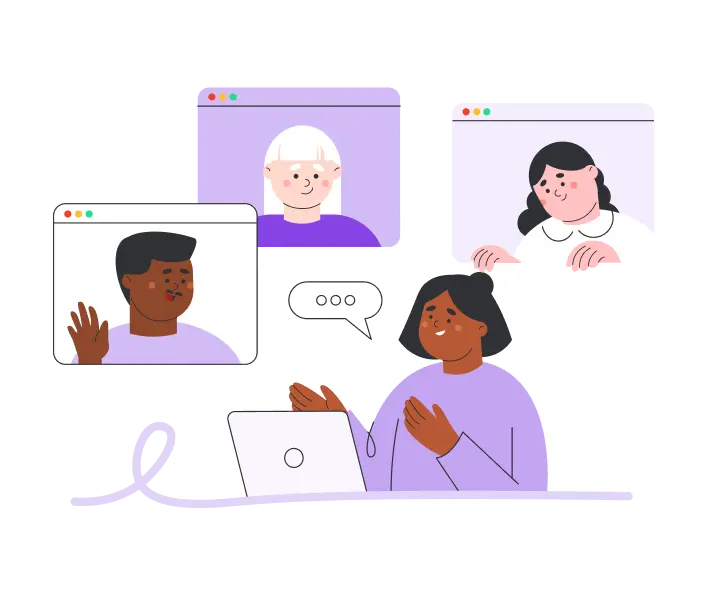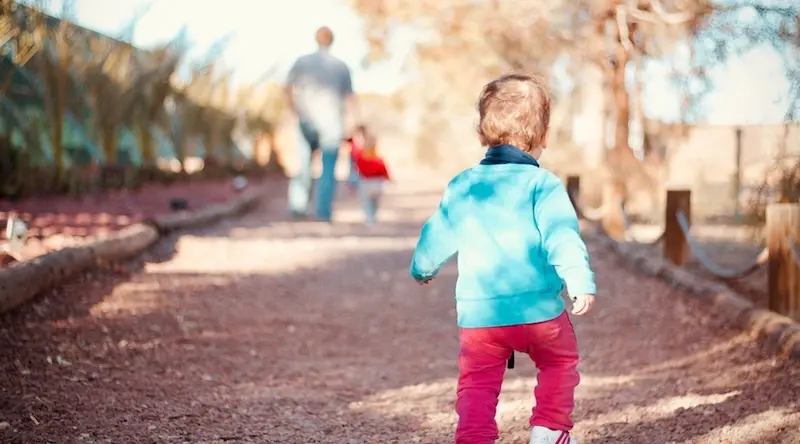settings
children
With Famly since
What are open-ended questions?
Let’s start off with some key features. Open-ended questions:
- Can’t be answered with yes or no.
- Don’t have a right or wrong answer.
- Encourage discussion, not short or single-word answers.
- Don’t assume too much about the activity or situation you’re questioning.
- Give control to the child.
They tend to start with a ‘What’, ‘How’, ‘Where’ or a ‘Why’ (and rarely a ‘Which’ or ‘Who’, which tend to lead to multiple choice questions). Great open-ended questions can start with a ‘Tell me about…’ or an ‘I wonder if…’ as well.
Think of them as good conversation starters you use to help build a positive relationship over extracting information. Most importantly, they should be about tuning into the child and listening deeply before responding, creating a powerful learning moment.

Why are open-ended questions so powerful in the early years?
For one, they help children to learn problem-solving. Instead of giving them the ‘right’ way to do something, open-ended questions encourage independent thinking and guide children towards finding their own truth.
They give children the opportunity to try, fail, hypothesise, experiment and succeed on their own.
They also:
- Stimulate more language use.
- Show there are many solutions to one problem.
- Affirm children’s self-confidence.
- Allow children to take charge.
- Help to encourage creative thinking rather than just simple answers
- Allow children to freely elaborate and share valuable information
Open-ended questions and sustained shared thinking
Sustained Shared Thinking is when two or more people are involved in an extended conversation, where both of you are absorbed in the joint problem-solving.
It’s been proven to be a crucial part of early development, and open-ended questions encourage it left, right, and centre. For more on Sustained Shared Thinking, we recommend this great introduction from Kathy Brodie.
The big ideas

The 6 stages of open-ended questions
These next six categories are rough guidelines for development through open-ended questions. Theoretically, they reflect the learning curve of a child in the early years, but they’re guidelines, not rules.
Remember the basic principles of open-ended questions, arm yourself with a few starters like “I wonder if…” and “Can you tell me about..” and you’re unlikely to go too far wrong. Tune into the child, and you won’t be asking them questions they’re not ready for.
1. The Immediate Thinker
The Immediate Thinker is ready to answer questions with stuff from their direct experience.
Your questions should relate to more concrete things that they can see, feel, hear or remember. They are often ‘What’ questions. Things like:
- What can you hear outside?
- What do you think it is?
- Can you tell me about what you’ve made?
- What does it feel like?
- Can you find something green out here?
These questions are great because it helps them to explore their sense of self, notice detail, and encourage curiosity in the world around them.

2. The Expresser & Comprehender
Moving on from The Immediate Thinker, here we’re asking them about what they think about their experience too. Open-ended questions like:
How do you feel about that?What happened when you jumped off the rock?How do you know that?Why do you think that happened?
3. The Clarifier & Grouper
At this stage, we’re dealing with how ideas relate to one another. We’re looking for solutions to different situations. We’re talking about open-ended questions like:
How are these the same?How are they different?Why is this here?What else could work for that?Can you see anything that could help us to do that?What else do we need to make this sandwich?

4. The Experimenter
This is when children start to think about cause and effect in the here and now. They might not be ready for abstract thinking yet, but they can explore their options and think about what might happen when they make an action.
Mostly, this stage is all about ‘What do you think is going to happen?’, but it can be emotional too. When reading a story you could ask ‘How do you think the bear feels?’ or in a real-life situation you can try to encourage empathy by asking ‘How do you think that made Charlotte feel?’. It helps children to begin stepping into another person’s shoes.
5. The Problem-Solver
Rather than questions like ‘What will happen if we leave the water outside overnight?’ it’s more ‘How do you think we can make this water become ice?’. Also things like:
How could we make this structure stronger?What else do you want to add to your creation?What might make Michael feel better?What helps you to feel better when you’re upset?

6. The Predictor & Explainer
Probably the most advanced stage of open-ended questioning, this is all about understanding what might happen under different circumstances. It’s also about understanding why things might have happened.
This can take a lot of cognitive load because they need to both consider situations outside their direct experience, and predict the future in that alternative world. This might seem a simple thing for us to do, but it’s not easy for a 5-year-old. We’re talking about questions like:
If that were to happen, how might he feel?Why did the ball fall down the pipe that way?I wonder what would happen if we turned it around? What do you think?
Top tips for asking open-ended questions
To finish up, we’ve got some short tips for teachers who want to improve the way the ask open-ended questions. For this, we’re indebted to Professor Iram Siraj-Blatchford’s 2005 presentation “Quality Interactions in the Early Years’ where you can find even more ideas to support quality Sustained Shared Thinking.
- Tune in – Respect the child and how they’re feeling, including their body language, speech and actions. Don’t get so wrapped up in your own thoughts that you forget to connect with the child.
- Give your full attention – When children are engaged, try to keep eye contact and affirm with smiles and nods.
- Don’t push it – If they’re too focused to answer or engage with you, leave them be. Remember, it’s about interacting, not interfering or interrupting.
- Extend language – Repeat concepts or actions that children are doing with more complex vocabulary to promote richer language.
- Don’t assume – Keep an open mind so that you assume as little as possible. This will stop you from closing off your questions.
- Don’t ask a question that you already know the answer to – You’ll be surprised how easily young children know when you’re doing this.
- Offer your own experience – Any conversation should be a two-way street. It might be more engaging for a child to hear a little about what you think on the subject too. Just remember to keep it to your opinions and preferences.
Four ideas to simplify your open-ended questions
Reading the child and making sure you’re not causing them distress is the key to getting this right. But if you (or they) are struggling, these four ways to simplify questions might help. Do the opposite, and you have four easy ways to make your open-ended questions more challenging.
- Make the question more concrete
- Relate them to personal experiences.
- Choose recent events or objects.
- Prioritise familiar vocabulary.
Your personal writing assistant
Fix spelling, grammar, and improve the tone of every message and newsfeed post. All with Sidekick.
Learn how Sidekick works










